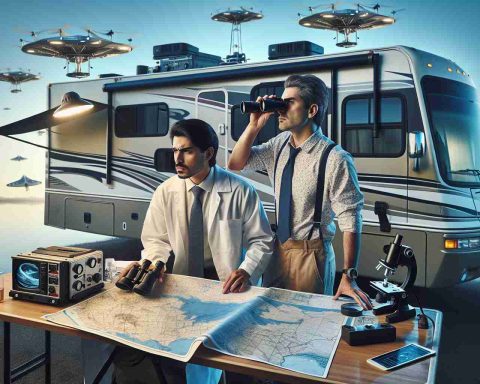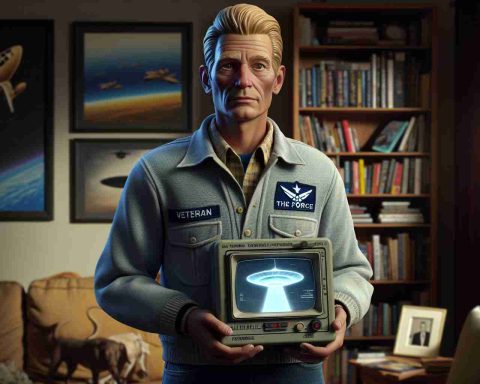The upcoming launch of Boeing’s CST-100 Starliner could redefine space travel, but it doesn’t come without hurdles. As private industries compete to take humanity to the stars, the Starliner aims to join the elite club, promising a new era of innovation and exploration.
What Sets the Starliner Apart?
Designed with cutting-edge automation technology, the Starliner has the potential to make space travel as routine and safe as commercial aviation. Its ability to autonomously dock with the International Space Station (ISS) showcases a giant leap in enhancing operational efficiency in space missions. Moreover, its reusable design is set to reduce the cost per astronaut seat, making space more accessible than ever.
Challenges and Criticisms
Despite its promising features, the project has faced numerous delays and technical setbacks, which have raised eyebrows in both the industry and scientific communities. Questions regarding its safety protocols and reliability have put Boeing in the hot seat, leading to intensified scrutiny.
The Future Beckons
Nevertheless, the Starliner represents a significant step towards diversifying the players in the space travel industry. A successful mission could open doors for numerous partnerships and collaborations, potentially accelerating the pace of technological advancements. The world watches closely as Boeing attempts to prove that the Starliner is more than just a blemished project—it may very well be the harbinger of a new space age.
Is Boeing’s CST-100 Starliner the Future of Space Travel?
The aerospace industry is buzzing with excitement and speculation as Boeing’s CST-100 Starliner edges closer to its much-anticipated launch. While the project has been marked by challenges, the potential implications on the future of space travel could be monumental. Here’s a look at the dimensions beyond the common narrative surrounding this innovative spacecraft.
Innovative Features of the Starliner
The Boeing Starliner is imbued with advanced technological features that set it apart from its contemporaries. One of the standout aspects is its integration of cutting-edge automation technology, designed to simplify space operations. This technology enables the Starliner to autonomously dock with the International Space Station (ISS), reducing human error and increasing the efficiency of missions.
The spacecraft’s reusability is another key feature aimed at transforming the economics of space travel. By significantly reducing the cost per astronaut seat, the Starliner is poised to make space travel more accessible. This could open opportunities for both governmental and private entities to explore space like never before.
Market Analysis and Comparisons
In the competitive realm of space exploration, Boeing’s Starliner is often compared with SpaceX’s Dragon series. Both offer reusable designs and autonomous docking capabilities. However, market analysts observe that the Starliner’s focus on automation and cost-effectiveness could give it an edge in commercial spaceflight applications. As these titans of aerospace compete, innovation and persistence are likely to spark rapid advancements in the field.
Security and Safety Enhancements
A primary concern for any new spacecraft is the security and safety of its operations. Boeing has been under scrutiny due to delays and technical challenges but has reportedly been dedicating significant resources to intensify its safety protocols. Enhanced safety measures include redundant systems and rigorous testing phases to ensure reliability under different operational scenarios.
Sustainability and Environmental Impacts
Boeing has also addressed the environmental impacts of launching spacecraft. The Starliner’s reusable design fits well within the increasingly necessary trend toward sustainable practices in space travel. Reducing waste and optimizing resource use not only cuts costs but also diminishes the environmental footprint of human activities beyond Earth.
Pricing and Accessibility Trends
In line with trends towards making space more accessible, the CST-100 Starliner’s pricing strategy could revolutionize astronaut transport. By driving down the costs associated with space travel, Boeing hopes to attract a diverse range of clientele, from government missions to private-sector projects. This increased accessibility can spur more frequent missions, potentially leading to exponential growth in space-based scientific research and commercial endeavors.
Conclusion and Predictions
The success or failure of the CST-100 Starliner will not only impact Boeing’s future in space exploration but could also reshape the industry’s landscape. Should the Starliner succeed, it may catalyze a new era where space travel becomes routine, safe, and financially viable for more players.
In light of these developments, many are keeping their eyes on Boeing and the Starliner as they anticipate what could be the dawn of a new space age. For ongoing updates on Boeing’s innovations, visit the official Boeing website.


















